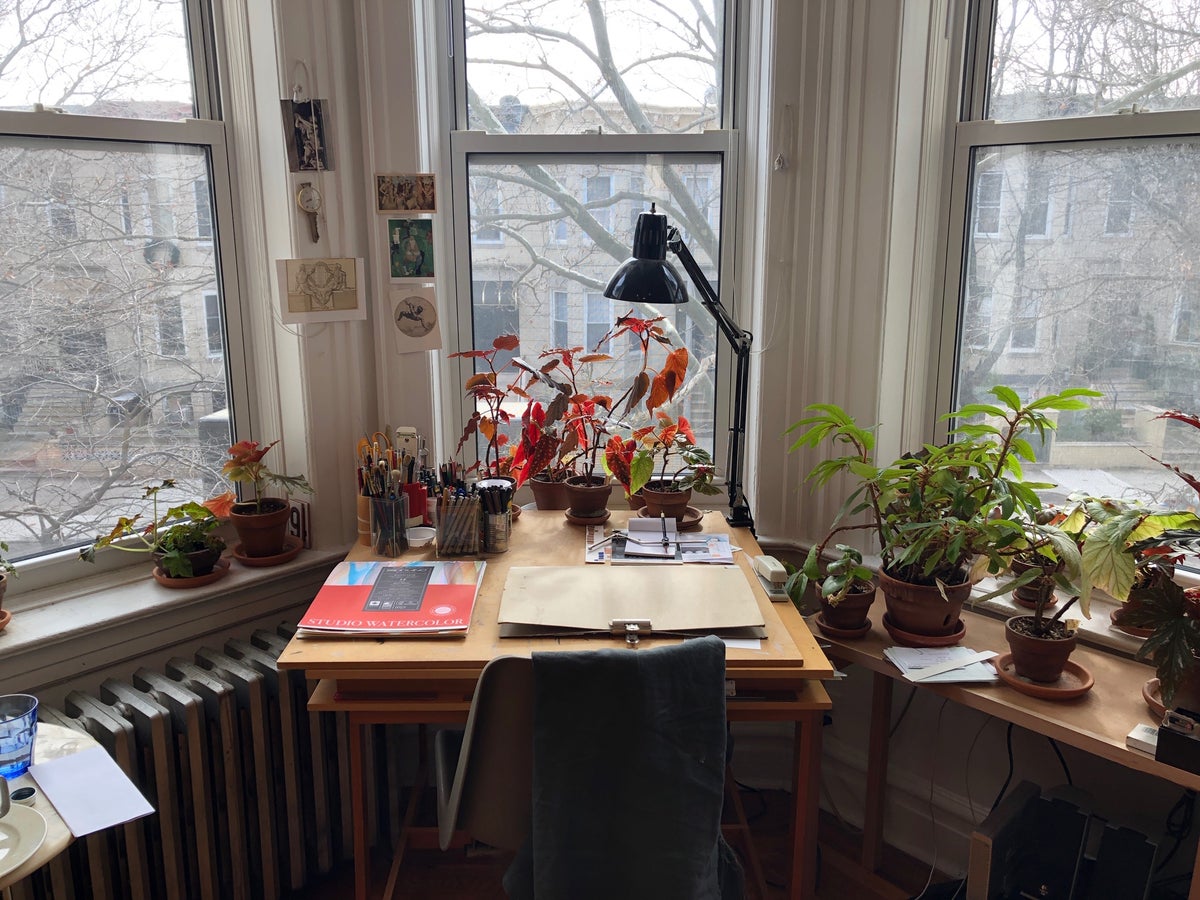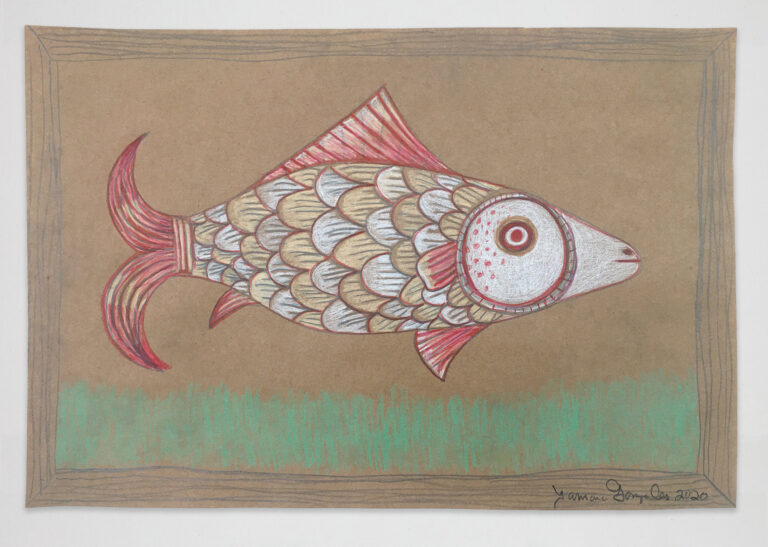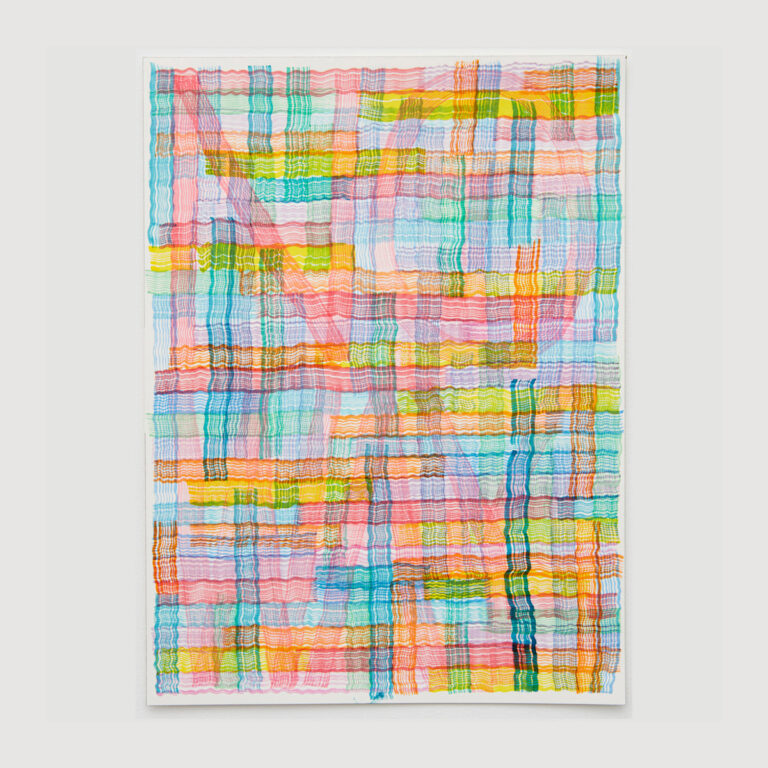KLAUS ON PAPER
We recommend the latest version of Safari, Firefox, Chrome, or Microsoft Edge.

One of the great pleasures of visiting artists’ studios is pouring through sketchbooks and pads that sit on work tables by windows, or papers spread out over the floor and walls. Whether working in watercolor, ink, graphite or less conventional materials, artists have always used paper as an intimate and immediate surface upon which to work. We at Klaus Gallery have always appreciated the unique qualities of works on paper, and are pleased to share these great pieces by five gallery artists.
Liz Luisada culls imagery from dreams and mysticism and abstracts her material into painterly brushstrokes and studies of color. Faces, figures, and objects appear in some paintings generated through gestural strokes and whimsical marks, while other paintings veer deeper into abstracted fields of paint. Luisada strives to create a mystical energy in her work, imbuing her compositions with a sense of magic made material.


It’s time.
It’s days.
It’s grids.
It’s structure..
Gradations, the safe passage between extremes.
The mystic union of opposites.
Or is it a smushy caterpillar inside its cocoon?
A blobby mud person, an ancient Sumarian mud monster woman. Isis. Gaia.
Floods.
Disasters.
Water flow.
Erosion.
The dance of organisms in space.
Seeds sprouting
The world reborn.
— Liz Luisada
Ms. Luisada…creat[es] blurred patterns and images with a festive, lighted-from-within ephemeralness.

untitled, 2019
watercolor on paper
16.825 × 11.825 inches (42.74 × 30.04 cm)

untitled, 2019
watercolor on paper
11 ⅞ × 11 ⅞ inches (30.16 × 30.16 cm)

untitled, 2019
watercolor on paper
12 × 11 ⅞ inches (30.48 × 30.16 cm)



Similar to the ways in which such painters as Gerhard Richter, Luc Tuymans, and David Hockney have explored the influence of photography on painting, Anderson’s pictorial style offers a digital or graphic imagemaking sensibility. His morphing forms, use of motifs, and flattened spatial dimensions bring to mind the stylized and reductive nature of classic cel animation and low-bit computer graphics.

untitled, 2019
gouache on paper
10 ¼ × 6 ⅞ inches (26.04 × 17.46 cm)

untitled, 2019
gouache on paper
9 × 6 ¾ inches (22.86 × 17.15 cm)

[Gonzales’] true subject matter is the material world. She has an indiscriminate appetite for cross-cultural pollination and distills the dissonance of contemporary life into these objects that can seem as jarring as they are soothing.
“The color of this pad of paper attracted me. It was originally my grandson’s.
He tired of it and moved on to something else but he had left a couple of pages with scribbles on them. Whenever these came up in the pad I incorporated them into the drawings I was making.
It was a starting point that also led me to work horizontally, that’s not my usual orientation. It became a challenge game I’ve been playing with myself.
A little move, turning the paper, but it brought out different imagery. The characters are part of an entourage that I think are always present in my head. When I was younger I used to feel like I was searching for imagery.
Now it’s more like who’s going to show up today.
The patterns are about mark making, the color intuitive. Lots of times I times I play the Beat game “ first choice best choice”. It helps combat getting stuck thinking about what pencil to pick up.
Also I love working right at twilight or by candle.”
— Tamara Gonzales

Fish, 2020
12 x 18″
water color pencil on paper

Daughter of the Sea, 2020
12 x 18″
watercolor and pencil on paper

Flagstone Serpent, 2020
12 x 18″
watercolor and pencil on paper



These drawings came about from sketches for my poured painting works. Dry brushing with the pens was a quick way of playing with the formatting of the text. The wiggly lines acted as a kind of shorthand for the painted line, but eventually became their own thing. The ink doesn’t mix, but builds through layers of overlapping transparency and begins to obscure and camouflage the text through a plaid-like pattern. The marks function to bury the words into a field of noisy pattern and build up without a plan; pushing the legibility or illegibility until the drawing works out or fails. The text is dead pan and incredulous, but lost in a field of noise, both defiant and silent within the paintings and drawings.
— Glen Baldridge

RECENTLY ACQUIRED BY
One from a portfolio with six screenprints
19 × 16 1/16″ (48.2 × 40.8 cm); sheet: 21 × 18″ (53.4 × 45.7 cm)
Publisher: The International Print Center, New York (IPCNY)
Printer: Kayrock Screenprinting, New York
Edition: 60
“What does this one say?” I ask, squinting.
“Wait what,” he deadpans.
“Wait, what?” I ask, because I think he just asked me what I asked.
“Wait what.” He sets the trap again.
“Wait, what?” I ask again, lost.

Buzz Kill, 2017
Ink on paper
12 × 9 inches (30.48 × 22.86 cm)

No Way, 2017
Ink on paper
12 × 9 inches (30.48 × 22.86 cm)

Dark Daze, 2017
Ink on paper
8.5 x 5.625 inches (21.6 x 14.3 cm)

Coulis’s subjects…are not naturalistic. Instead, they somehow propel you into an imaginative space of sign systems denoting some arcane language…

Standing and Lying Lemons, 2020
18 x 24″
gouache on Arches paper

Orange in Pitcher, 2020
18 x 24″
gouache on Arches paper
Learn More About the Artists in “Klaus On Paper”